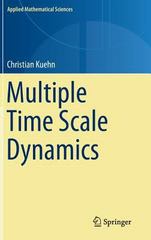Question
Suppose that customers arrive to a service system according to a Poisson process with rate > 0. These customers need to be served one at
Suppose that customers arrive to a service system according to a Poisson process with rate >0. These customers need to be served one at a time, and there is a dedicated server (Joanne) for serving them. However, in order to reduce customer waiting times and increase customer satisfaction, Joanne's manager (Susan) will help whenever there areNor more customers in the system, whereN= 2. Assume that Joanne's service times are exponentially distributed with rate >0 and that Susan's service times are exponentially distributed with rate0> . Furthermore, assume that for increased customer satisfaction, service is non-preemptive; hence when Susan is helping out, she will only depart if there are (strictly) fewer thanNcustomers left in the system when she finishes serving a customer (and thus it is possible that Susan is serving a customer even when there are fewer thanNcustomers in the system). Assume that all random variables (interarrival and service times) are independent.
Model this situation as a continuous-time Markov chain. In other words, specify your model{X(t)}, its state spaceS, and draw its transition-rate diagram (you do not need to show that your model is a continuous-time Markov chain). Explain.
Step by Step Solution
There are 3 Steps involved in it
Step: 1

Get Instant Access to Expert-Tailored Solutions
See step-by-step solutions with expert insights and AI powered tools for academic success
Step: 2

Step: 3

Ace Your Homework with AI
Get the answers you need in no time with our AI-driven, step-by-step assistance
Get Started


